Casio Collection SGW-300H-1AVER Handleiding
Bekijk gratis de handleiding van Casio Collection SGW-300H-1AVER (5 pagina’s), behorend tot de categorie Horloge. Deze gids werd als nuttig beoordeeld door 106 mensen en kreeg gemiddeld 4.6 sterren uit 53.5 reviews. Heb je een vraag over Casio Collection SGW-300H-1AVER of wil je andere gebruikers van dit product iets vragen? Stel een vraag
Pagina 1/5

Operation Guide 3202
1
Congratulations upon your selection of this CASIO watch.
Applications
The built-in sensors of this watch measure barometric pressure, temperature and
altitude. Measured values are then shown on the display. Such features make this
watch useful when hiking, mountain climbing, or when engaging in other such outdoor
activities.
Warning !
•
The measurement functions built into this watch are not intended for taking
measurements that require professional or industrial precision. Values produced
by this watch should be considered as reasonable representations only.
• Note that CASIO COMPUTER CO., LTD. assumes no responsibility for any
damage or loss suffered by you or any third party arising through the use of
this product or its malfunction.
About This Manual
• Depending on the model of your watch, display text
appears either as dark figures on a light background, or
light figures on a dark background. All sample displays
in this manual are shown using dark figures on a light
background.
• Button operations are indicated using the letters shown
in the illustration.
• Note that the product illustrations in this manual are
intended for reference only, and so the actual product
may appear somewhat different than depicted by an
illustration.
Things to check before using the watch
1. Check the Home City and the daylight saving time (DST) setting.
Use the procedure under “To configure Home City settings” to configure your Home
City and daylight saving time settings.
Important!
Proper World Time Mode data depend on correct Home City, time, and date settings
in the Timekeeping Mode. Make sure you configure these settings correctly.
2. Set the current time.
See “Configuring Current Time and Date Settings”.
The watch is now ready for use.
Mode Reference Guide
Your watch has 7 “modes”. The mode you should select depends on what you want to do.
To do this: Enter this mode:
• View the current time and date in the Home City
•
Configure Home City and daylight saving time (DST) settings
• Configure time and date settings
Timekeeping Mode
View the barometric pressure and temperature at your
current location Barometer/Thermometer
Mode
• View the altitude at your current location
• Determine the altitude differential between two locations
(reference point and current location)
Altimeter Mode
View the current time in one of 48 cities (31 time zones)
around the globe World Time Mode
Use the stopwatch to measure elapsed time Stopwatch Mode
Use the countdown timer Countdown Timer Mode
Set an alarm time Alarm Mode
MO1004-EB
Selecting a Mode
• The illustration below shows which buttons you need to press to navigate between
modes.
• In any mode (except when a setting screen, with flashing digits is on the display),
press B to illuminate the display.
World Time
Mode
Barometer/
Thermometer Mode
Stopwatch Mode
Countdown
Timer Mode Alarm Mode
Altimeter Mode
Timekeeping Mode
World Time
Mode
Barometer/
Thermometer Mode
Stopwatch Mode
Countdown
Timer Mode Alarm Mode
Altimeter Mode
Timekeeping Mode
General Functions (All Modes)
The functions and operations described in this section can be used in all of the modes.
Auto Return Features
• The watch returns to the Timekeeping Mode automatically if you do not perform any
button operation for two or three minutes in the Alarm Mode.
• The watch will return to the Timekeeping Mode automatically if you do not perform
any operation for about one hour after entering the Barometer/Thermometer Mode.
•
If you leave a setting screen with flashing digits on the display for two or three minutes
without performing any operation, the watch exits the setting screen automatically.
Initial Screens
When you enter the World Time Mode or Alarm Mode, the data you were viewing
when you last exited the mode appears first.
Scrolling
The
B and D buttons are used on the setting screen to scroll through data on the
display. In most cases, holding down these buttons during a scroll operation scrolls
through the data at high speed.
Timekeeping
Use the Timekeeping Mode to set and view the current
time and date.
• In the Timekeeping Mode, the graphic in the center of
the display indicates the passage of seconds.
PM
indicator
Day of
week
Month
Day
Seconds
Graphi
c
Hour : Minutes
PM
indicator
Day of
week
Month
Day
Seconds
Graphi
c
Hour : Minutes
Configuring Home City Settings
There are two Home City settings: actually selecting the Home City and selecting
either standard time or daylight saving time (DST).
To configure Home City settings
1. In the Timekeeping Mode, hold down A until the
currently selected city code (Home City) starts to flash.
This is the city code setting screen.
• Before the city code starts to flash, the message
SET Hold will appear on the display. Keep A
depressed until SET Hold disappears and the city
code starts to flash.
• The watch will exit the setting mode automatically if
you do not perform any operation for about two or
three minutes.
• For details about city codes, see the “City Code
Table”.
2. Press D (East) and B (West) to select the city code
you want to use as your Home City.
• Keep pressing D or
B until the city code you want
to select as your Home City appears on the display.
3. Press C to display the DST setting screen.
4.
Press
D
to toggle between Daylight Saving Time ( ) On
and Standard Time ( ).OFF
• Note that you cannot switch between standard
time and daylight saving time (DST) while UTC is
selected as your Home City.
5.
After all the settings are the way you want, press
A to return to the Timekeeping Mode.
• The DST indicator appears to indicate that Daylight Saving Time is turned on.
Note
• After you specify a city code, the watch will use UTC* offsets in the World Time
Mode to calculate the current time for other time zones based on the current
time in your Home City.
* Coordinated Universal Time, the world-wide scientific standard of timekeeping.
The reference point for UTC is Greenwich, England.
PM
indicator
City
code
Second
s
Hour : Minutes
PM
indicator
City
code
Second
s
Hour : Minutes
Setting
DST indicator
Setting
DST indicator

Operation Guide 3202
2
To change the Daylight Saving Time (summer time) setting
1. In the Timekeeping Mode, hold down A until the
currently selected city code (Home City) starts to flash.
This is the city code setting screen.
• Before the city code starts to flash, the message
SET Hold will appear on the display. Keep A
depressed until SET Hold disappears and the city
code starts to flash.
2. Press C to display the DST setting screen.
3. Press D to toggle between Daylight Saving Time ( )On
and Standard Time ( ).OFF
4. After all the settings are the way you want, press
A to
return to the Timekeeping Mode.
• The DST indicator appears to indicate that Daylight
Saving Time is turned on.
Configuring Current Time and Date Settings
You can use the procedure below to adjust the current time and date settings if they
are off.
To change the current time and date settings
1. In the Timekeeping Mode, hold down A until the
currently selected city code (Home City) starts to flash.
This is the city code setting screen.
• Before the city code starts to flash, the message
SET Hold will appear on the display. Keep A
depressed until SET Hold disappears and the city
code starts to flash.
2. Use D and B to select the city code you want.
• Select your Home City code before changing any
other setting.
• For full information on city codes, see the “City
Code Table”.
3.
Press C to move the flashing in the sequence shown below to select the other settings.
Barometer
unit
Temperature
unit
Illumination
Duration
Button Operation
Tone On/Off Day
City
Code DST
Altitude
unit
12/24-Hour
Format Seconds Hour Minute Year Month
• The following steps explain how to configure timekeeping settings only.
4. When the timekeeping setting you want to change is flashing, use
B and/or D to
change it as described below.
Screen To do this: Do this:
Change the city code Use D (East) and
B (West).
Toggle between Daylight Saving Time (
On)
and Standard Time (
OFF). Press D.
Toggle between 12-hour (
12H) and 24-hour
(24H) timekeeping. Press D.
50 Reset the seconds to 00 Press D.
Change the hour or minute
Use D (+) and B
(–).
Change the year, month, or day
5. Press
A to exit the setting screen.
Note
• For information about selecting a Home City and configuring the DST setting, see
“Configuring Home City Settings”.
• While 12-hour format is selected for timekeeping, a P (PM) indicator will appear for
times from noon to 11:59 p.m. No indicator appears for times from midnight to
11:59 a.m. With 24-hour format, time is displayed from 0:00 to 23:59, without any
P
(PM) indicator.
• The watch’s built-in full automatic calendar makes allowances for different month
lengths and leap years. Once you set the date, there should be no reason to
change it except after you have the watch’s battery replaced.
Barometer/Thermometer
This watch uses a pressure sensor to measure air pressure (barometric pressure) and
a temperature sensor to measure temperature.
To enter and exit the Barometer/Thermometer Mode
1. While in the Timekeeping Mode, press
C to enter the
Barometer/Thermometer Mode.
• BARO will appear on the display, indicating
that barometric pressure and temperature
measurements are in progress. The measurement
results will appear on the display after about five
seconds.
• After you press C, the watch will take readings
every five seconds for the first three minutes, and
then every two minutes after that.
2. Press
C five times to return to the Timekeeping Mode.
•
The watch will return to the Timekeeping Mode automatically if you do not perform
any operation for about one hour after entering the Barometer/Thermometer Mode.
Barometric Pressure
• Barometric pressure is displayed in units of 1 hPa (or 0.05 inHg).
•
The displayed barometric pressure value changes to
- - - if a measured barometric
pressure falls outside the range of 260 hPa to 1,100 hPa (7.65 inHg to 32.45 inHg).
The barometric pressure value will reappear as soon as the measured barometric
pressure is within the allowable range.
Setting
DST indicator
Setting
DST indicator
PM
indicator
Second
s
Hour : Minutes
City
code
PM
indicator
Second
s
Hour : Minutes
City
code
Temperature
Current time
Barometric
pressure
Pressure
differential
pointer
Temperature
Current time
Barometric
pressure
Pressure
differential
pointer
Temperature
• Temperature is displayed in units of 0.1°C (or 0.2°F).
• The displayed temperature value changes to
--.- °C (or °F) if a measured
temperature falls outside the range of –10.0°C to 60.0°C (14.0°F to 140.0°F). The
temperature value will reappear as soon as the measured temperature is within the
allowable range.
Display Units
You can select either hectopascals (hPa) or inchesHg (inHg) as the display unit for the
measured barometric pressure, and Celsius (°C) or Fahrenheit (°F) as the display unit
for the measured temperature value. See “To specify temperature, barometric
pressure, and altitude units”.
Barometric Pressure Differential Pointer
This pointer indicates the relative difference between
the most recent barometric pressure reading and the
current barometric pressure value displayed in the
Barometer/Thermometer Mode.
Reading Barometric Pressure Differential Pointer
Pressure differential is indicated in the
range of ±5 hPa, in 1-hPa units.
If the pointer is
located here: It means this:
CLOUDY (–)
Pressure is falling and
weather will tend to
deteriorate.
FINE (+)
Pressure is rising and
weather will tend to
improve.
• The nearby screen shot, for example,
shows what the pointer would indicate
when the calculated pressure
differential is approximately – 3 hPa
(approximately – 0.09 inHg).
• Barometric pressure is calculated and displayed using hPa as the standard. The
barometric pressure differential also can be read in inHg units as shown in the
illustration (1 hPa = 0.03 inHg).
Pressure Sensor and Temperature Sensor Calibration
The pressure sensor and temperature sensor built into the watch are calibrated at the
factory and normally require no further adjustment. If you notice serious errors in the
pressure readings and temperature readings produced by the watch, you can calibrate
a sensor to the reading of another device to correct the errors.
Important!
• Incorrectly calibrating the temperature sensor can result in incorrect readings.
Carefully read the following before doing anything.
–
Compare the readings produced by the watch with those of another reliable and
accurate thermometer.
– If adjustment is required, remove the watch from your wrist and wait for 20 or 30
minutes to give the temperature of the watch time to stabilize.
To calibrate the pressure sensor and the temperature sensor
1.Take a reading with another measurement device to
determine the exact current barometric pressure or
temperature.
2. With the watch in the Timekeeping Mode, press
C to
enter the Barometer/Thermometer Mode.
3. Hold down A until the current temperature value starts
to flash on the display. This is the setting screen.
• Before the temperature value starts to flash, the
message SET Hold will appear on the display.
Keep A depressed until SET Hold disappears.
4. Press C to move the flashing between the temperature
value and barometric pressure value, to select the one
you want to calibrate.
5.
Use D (+) and B (–) to adjust the calibration value in the units shown below.
Temperature 0.1°C (0.2°F)
Barometric Pressure 1 hPa (0.05 inHg)
• To return the currently flashing value to its initial factory default setting, press
B and D at the same time. OFF will appear at the flashing location for about
one second, followed by the initial default value.
6. Press A to return to the Barometer/Thermometer Mode screen.
Barometer and Thermometer Precautions
• The pressure sensor built into this watch measures changes in air pressure, which
you can then apply to your own weather predictions. It is not intended for use as a
precision instrument in official weather prediction or reporting applications.
• Sudden temperature changes can affect pressure sensor readings.
• Temperature measurements are affected by your body temperature (while you are
wearing the watch), direct sunlight, and moisture. To achieve a more accurate
temperature measurement, remove the watch from your wrist, place it in a well
ventilated location out of direct sunlight, and wipe all moisture from the case. It
takes approximately 20 to 30 minutes for the case of the watch to reach the actual
surrounding temperature.
Altimeter
The watch displays altitude values based on air pressure readings taken by a built-in
pressure sensor.
How the Altimeter Measures Altitude
The altimeter can measure altitude based on its own preset values (initial default
method) or using a reference altitude specified by you.
When you measure altitude based on preset values
Data produced by the watch’s barometric pressure sensor is converted to approximate
altitude based on ISA (International Standard Atmosphere) conversion values stored
in watch memory.
When you measure altitude using a reference altitude specified by you
After you specify a reference altitude, the watch uses
that value to convert barometric pressure readings to
altitude.
Barometric
pressure
differential
pointer
Barometric
pressure
differential
pointer
−0.15 0 0.15
−5 0 5
inHg values
hPa values
Current pressure
less than most
recent measured
pressure
Current pressure
greater than most
recent measured
pressure
−0.15 0 0.15
−5 0 5
inHg values
hPa values
Current pressure
less than most
recent measured
pressure
Current pressure
greater than most
recent measured
pressure
l
l
l
l
l
l
l
l
l
l
l
l
l
l
l
l
l
l
l
l
l
l
l
l
l
l
l
l
l
l
l
l
l
l
l
l
l
l
l
l
l
l
l
l
l
l
l
l
l
l
l
l
l
l
l
l
l
l
l
l
l
l
l
l
l
l
l
l
l
l
l
l
l
l
l
l
l
l
l
l
l
l
l
l
l
l
l
l
l
l
l
l
l
l
l
l
l
l
l
l
l
l
l
l
l
l
l
l
l
l
l
l
l
l
l
l
l
l
l
l
l
l
l
l
l
l
l
l
l
l
l
l
l
l
l
l
l
l
l
l
l
l
l
l
l
l
l
l
l
l
l
l
l
l
l
l
l
l
l
l
l
l
l
l
l
l
l
l
l
l
l
l
l
l
l
l
l
l
l
l
l
l
l
l
l
l
l
l
l
l
l
l
l
l
l
l
l
l
l
l
l
l
l
l
l
l
l
l
l
l
l
l
l
l
l
l
l
l
l
l
l
l
l
l
l
l
l
l
l
l
l
l
l
l
l
l
l
l
l
l
l
l
l
l
l
l
l
l
l
l
l
l
l
l
l
l
l
l
l
l
l
l
l
l
l
l
l
l
l
l
l
l
l
l
l
l
l
l
l
l
l
l
l
l
l
l
l
l
l
l
l
l
l
l
l
l
l
l
l
l
l
l
l
l
l
l
l
l
l
l
l
l
l
l
l
l
l
l
l
l
l
l
l
l
l
l
l
l
l
l
l
l
l
l
l
l
l
l
l
l
l
l
l
l
l
l
l
l
l
l
l
l
l
l
l
l
l
l
l
l
l
l
l
l
l
l
l
l
l
l
l
l
l
l
l
l
l
l
l
l
l
l
l
l
l
l
l
l
l
l
l
l
l
l
l
l
l
l
l
l
l
l
l
l
l
l
l
l
l
l
l
l
l
l
l
l
l
l
l
l
l
l
l
l
l
l
l
l
l
l
l
l
l
l
l
l
l
l
l
l
l
l
l
l
A
B
A
B

Operation Guide 3202
3
• When mountain climbing, you can specify a reference altitude value in accordance
with a marker along the way or altitude information from a map. After that, the
altitude readings produced by the watch will be more accurate than they would
without a reference altitude value.
To take an altimeter reading
1. Make sure the watch is in the Timekeeping Mode.
2. Press
D
to start Altimeter measurement.
• ALTI will appear on the display, indicating that
Altimeter measurement is in progress. The first
reading will appear on the display after about four
or five seconds.
• The current altitude value is displayed in units of 5
meters (20 feet).
• After the first reading is obtained, the watch
continues to take altimeter readings automatically
every five seconds for the first three minutes, and
then every two minutes after that.
• If you leave the watch in the Altimeter Mode, it will update the displayed altitude
value regularly.
• Temperature is measured in the Barometer/Thermometer Mode and in the
Altimeter Mode. For details about temperature readings, see "Temperature".
3. After you are finished using the Altimeter, press
C
to return to the Timekeeping
Mode and stop auto measurement.
• The watch will return to the Timekeeping Mode automatically if you do not
perform any operation for about 10 hours after entering the Altimeter Mode.
Note
• The measurement range for altitude is –700 to 10,000 meters (–2,300 to 32,800
feet).
• The displayed altitude value changes to
- - - - if an altitude reading falls outside the
measurement range. An altitude value will reappear as soon as the altitude reading
is within the allowable range.
•
Normally, displayed altitude values are based on the watch’s preset conversion
values. You also can specify a reference altitude value, if you want. See “Specifying
a Reference Altitude Value” below.
• You can change the unit for displayed altitude values to either meters (m) or feet (ft).
See “To specify temperature, barometric pressure, and altitude units”.
Specifying a Reference Altitude Value
The altitude readings produced by this watch are subject to error caused by changes
in air pressure. Because of this, we recommend that you update the reference altitude
value whenever accurate altitude information is available during your climb. After you
specify a reference altitude value, the watch adjusts its air-pressure-to-altitude
conversion calculation accordingly.
To specify a reference altitude value
1. In the Altimeter Mode, hold down
A until the current
reference altitude value starts to flash. This is the
setting screen.
• Before the reference altitude value starts to flash,
the message SET Hold will appear on the display.
Keep A depressed until SET Hold disappears.
2. Press D (+) or B (–) to change the current reference
altitude value by 5 meters (or 20 feet).
• Specify a reference altitude value based on
accurate altitude information about your current
location from a map, etc.
• You can set the reference altitude value within the range of –10,000 to 10,000
meters (–32,800 to 32,800 feet).
•
Pressing B and D at the same time returns to OFF (no reference altitude value),
so the watch performs air pressure to altitude conversions based on preset data
only.
3. Press A to exit the setting screen.
How does the altimeter work?
Generally, air pressure and temperature decrease as altitude increases. This watch
bases its altitude measurements on International Standard Atmosphere (ISA) values
stipulated by the International Civil Aviation Organization (ICAO). These values define
relationships between altitude, air pressure, and temperature.
0 m 500 m
1000 m
1500 m
2000 m
2500 m
3000 m
3500 m
4000 m
899 hPa
795 hPa
701 hPa
616 hPa
8.5°C
2°C
–4.5°C
–11°C
15°C1013 hPa
About 6.5°C
per 1000 m
About 8 hPa per 100 m
About 9 hPa per 100 m
About 10 hPa per 100 m
About 11 hPa per 100 m
About 12 hPa per 100 m
Altitude Air Pressure Temperature
0 ft. 2000 ft.
4000 ft.
6000 ft.
8000 ft.
10000 ft.
12000 ft.
14000 ft.
25.84 inHg
22.23 inHg
19.03 inHg
44.7°F
30.5°F
16.2°F
59.0°F29.92 inHg
About 3.6°F
per 1000 ft.
About 0.15 inHg per 200 ft.
About 0.17 inHg per 200 ft.
About 0.192 inHg per 200 ft.
About 0.21 inHg per 200 ft.
Source: International Civil Aviation Organization
• Note that the following conditions will prevent you from obtaining accurate readings:
When air pressure changes because of changes in the weather
Extreme temperature changes
When the watch itself is subjected to strong impact
There are two standard methods of expressing altitude: Absolute altitude and relative
altitude. Absolute altitude expresses an absolute height above sea level. Relative
altitude expresses the difference between the height of two different places.
Height of building 130 m
(relative altitude)
Rooftop at an altitude of
230 m above sea level
(absolute altitude)
Sea Level
Current time
Current
altitude Temperature
Current time
Current
altitude Temperature
l
l
l
l
l
l
l
l
l
l
l
l
l
l
l
l
l
l
l
l
l
l
l
l
l
l
l
l
l
l
l
l
l
l
l
l
l
l
l
l
l
l
l
l
l
l
l
l
l
l
l
l
l
l
l
l
l
l
l
l
l
l
l
l
l
l
l
l
l
l
l
l
l
l
l
l
l
l
l
l
l
l
l
l
l
l
l
l
l
l
l
l
l
l
l
l
l
l
l
l
l
l
l
l
l
l
l
l
l
l
l
l
l
l
l
l
l
l
l
l
l
l
l
l
l
l
l
l
l
l
l
l
l
l
l
l
l
l
l
l
l
l
l
l
l
l
l
l
l
l
l
l
l
l
l
l
l
l
l
l
l
l
l
l
l
l
l
l
l
l
l
l
l
l
l
l
l
l
l
l
l
l
l
l
l
l
l
l
l
l
l
l
l
l
l
l
l
l
l
l
l
l
l
l
l
l
l
l
l
l
l
l
l
l
l
l
l
l
l
l
l
l
l
l
l
l
l
l
l
l
l
l
l
l
l
l
l
l
l
l
l
l
l
l
l
l
l
l
l
l
l
l
Altimeter Precautions
• This watch estimates altitude based on air pressure. This means that altitude
readings for the same location may vary if air pressure changes.
• The semiconductor pressure sensor used by the watch for altitude measurements
is also affected by temperature. When taking altitude measurements, do not subject
the watch to temperature changes.
• Do not rely upon this watch for altitude measurements or perform button operations
while sky diving, hang gliding, or paragliding, while riding a gyrocopter, glider, or
any other aircraft, or while engaging in any other activity where there is the chance
of sudden altitude changes.
• Do not use this watch for measuring altitude in applications that demand
professional or industrial level precision.
• Remember that the air inside of a commercial aircraft is pressurized. Because of
this, the readings produced by this watch will not match the altitude readings
announced or indicated the flight crew.
Specifying Temperature, Barometric Pressure, and Altitude Units
Use the procedure below to specify the temperature, barometric pressure, and altitude
units to be used in the Barometer/Thermometer Mode and the Altimeter Mode.
Important!
When TYO (Tokyo) is selected as the Home City, the
altitude unit is set automatically to meters (m), the
barometric pressure unit to hectopascals (hPa), and the
temperature unit to Celsius (°C). These settings cannot
be changed.
To specify temperature, barometric pressure, and altitude units
1. In the Timekeeping Mode, hold down A until the currently selected city code starts
to flash. This is the city code setting screen.
• Before the city code starts to flash, the message SET Hold will appear on
the display. Keep A depressed until SET Hold disappears and the city code
starts to flash.
2. Keep pressing C until (temperature), (altitude), or (barometric TEMP ALTI BARO
pressure) appears in the upper left corner of the screen.
• See step 3 under “To change the current time and date settings” for information
about how to scroll through setting screens.
3. Perform the operations below to specify the units you want.
To specify this unit: Press this key: To toggle between these settings:
Temperature D°C (Celsius) and °F (Fahrenheit)
Altitude Dm (meters) and ft (feet)
Barometric Pressure DhPa (hectopascals) and inHg (inches of mercury)
4. After the settings are the way you want, press
A to exit the setting screen.
Precautions Concerning Simultaneous Measurement of Altitude and Temperature
Though you can perform altitude and temperature measurements at the same time,
you should remember that each of these measurements requires different conditions
for best results. With temperature measurement, it is best to remove the watch from
your wrist in order to eliminate the effects of body heat. In the case of altitude
measurement, on the other hand, it is better to leave the watch on your wrist, because
doing so keeps the watch at a constant temperature, which contributes to more
accurate altitude measurements.
• To give altitude measurement priority, leave the watch on your wrist or in any other
location where the temperature of the watch is kept constant.
• To give temperature measurement priority, remove the watch from your wrist and
allow it to hang freely from your bag or in another location where it is not exposed
to direct sunlight. Note that removing the watch from your wrist can affect pressure
sensor readings momentarily.
Checking the Current Time in a Different Time Zone
You can use the World Time Mode to view the current
time in one of 31 time zones (48 cities) around the globe.
The city that is currently selected in the World Time Mode
is called the “World Time City”.
To enter the World Time Mode
Use C to select the World Time Mode ( ) as shown in WT
“Selecting a Mode”.
•
WT will appear on the display for about one second.
Next, the display will change to show the city code of
the currently selected World Time City.
To view the time in another time zone
In the World Time Mode, use D (East) to scroll through
city codes.
To specify standard time or daylight saving time (DST) for a city
1. In the World Time Mode, use D (East) to display the
city code (time zone) whose Standard Time/Daylight
Saving Time setting you want to change.
2. Hold down A until appears on the display DST Hold
and then disappears. Release A after DST Hold
disappears.
• This toggles the city code you selected in step
1 between Daylight Saving Time (DST indicator
displayed) and standard time (DST indicator not
displayed).
• You cannot use the World Time Mode to change the current standard time/
daylight saving time (DST) setting of the Home City.
• Note that you cannot switch between standard time/daylight saving time
(DST) while UTC is selected as the World Time City.
• Note that the standard time/daylight saving time (DST) setting affects only the
currently selected time zone. Other time zones are not affected.
l
l
l
l
l
l
l
l
l
l
l
l
l
l
l
l
l
l
l
l
l
l
l
l
l
l
l
l
l
l
l
l
l
l
l
l
l
l
l
l
l
l
l
l
l
l
l
l
l
l
l
l
l
l
l
l
l
l
l
l
l
l
l
l
l
l
l
l
l
l
l
l
l
l
l
l
l
l
l
l
l
l
l
l
l
l
l
l
l
l
l
l
l
l
l
l
l
l
l
l
l
l
l
l
l
l
l
l
l
l
l
l
l
l
l
l
l
l
l
l
l
l
l
l
l
l
l
l
l
l
l
l
l
l
l
l
l
l
l
l
l
l
l
l
Currently selected
World Time City
Current time in the currently
selected World Time City
Current Timekeeping
Mode time
Currently selected
World Time City
Current time in the currently
selected World Time City
Current Timekeeping
Mode time
DST indicatorDST indicator
Product specificaties
| Merk: | Casio |
| Categorie: | Horloge |
| Model: | Collection SGW-300H-1AVER |
Heb je hulp nodig?
Als je hulp nodig hebt met Casio Collection SGW-300H-1AVER stel dan hieronder een vraag en andere gebruikers zullen je antwoorden
Handleiding Horloge Casio
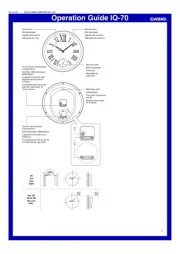
18 Juni 2025
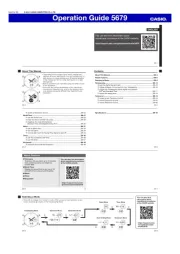
17 Juni 2025
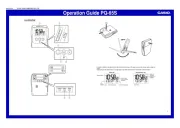
17 Juni 2025
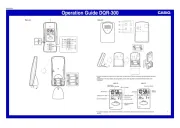
16 Juni 2025

16 Juni 2025
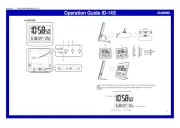
16 Juni 2025
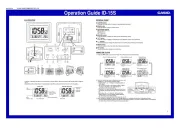
16 Juni 2025
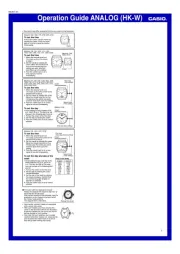
16 Juni 2025
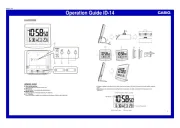
16 Juni 2025
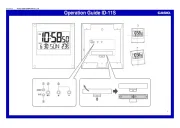
16 Juni 2025
Handleiding Horloge
- Hype
- Grand Seiko
- Breitling
- Diesel
- AMS
- Slazenger
- ESQ
- Rodania
- Tikkers
- Polar
- Olivia Burton
- Gant
- Velleman
- Oregon Scientific
- DMC
Nieuwste handleidingen voor Horloge
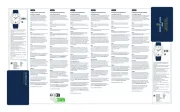
2 September 2025
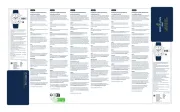
1 September 2025

1 September 2025

1 September 2025

31 Augustus 2025

19 Augustus 2025
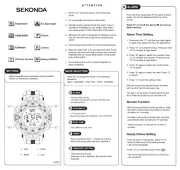
19 Augustus 2025

18 Augustus 2025

18 Augustus 2025

18 Augustus 2025